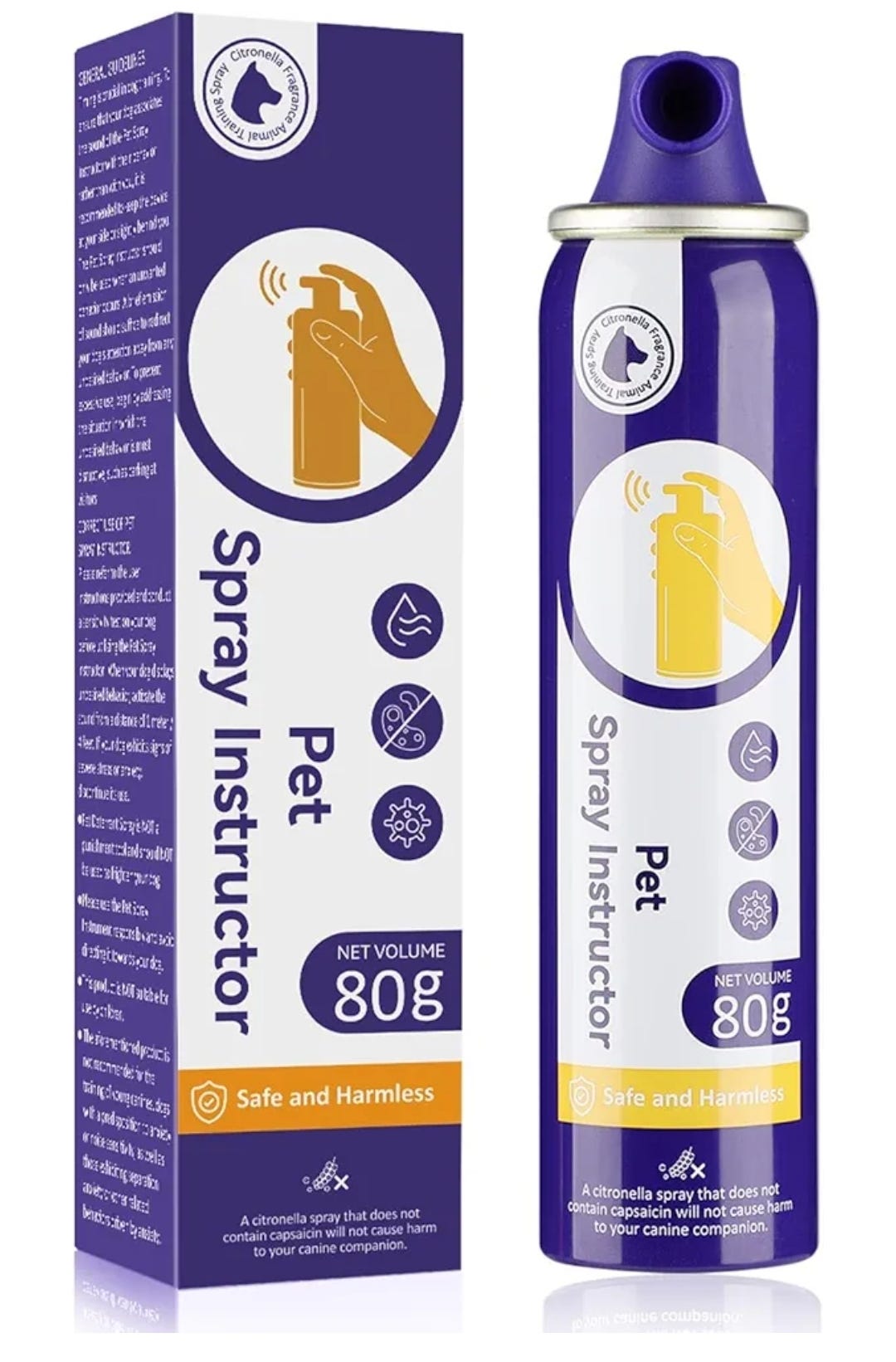Try Keeping This Useful Tool In Your Dog-Walking Bag
Mutt Sense - Practical Dog Tools & Tips - Issue #2
I purchased the tool I’m introducing this week for one reason - to help adjust one specific behaviour in my dog. However, after making it a must-have in my dog-walking bag, I've discovered plenty of other uses, which is why I thought I’d share today.
This tool has several different names, including pet corrector, pet instructor, and training spray.
All it is is a can of compressed air, not unlike the ones you’d use to clean cookie crumbs out of your keyboard (admit it, you have crumbs in your keyboard).
Unlike keyboard cleaner, this is a pocket-sized canister for easy carrying.
My dog trainer introduced this spray to me a couple of years ago.
Pet corrector spray, also known as a "hissing" spray, is primarily used as a training tool to interrupt and redirect certain unwanted behaviours. It works by emitting a harmless hiss of air that distracts the dog, allowing you to divert their attention to a desired behaviour.
The reason I first tried it was because Dezi fixates on other dogs, even a hundred miles away. She’ll sit or lie down and won’t budge as long as the dog is within eyeshot.
I’ve only had to spray the pet corrector twice before she began adjusting herself just by seeing the can. I used it in conjunction with the word “FOCUS.”
Since it worked so well for getting her attention in one situation, I thought I’d try it for her reactivity on leash walks as well. As we would approach another dog on a pathway, I’d pull out the spray can, make her aware of it, and use the “focus” command. She’d focus on that rather than the oncoming dog.
Other uses for pet corrector spray.
It didn’t take long to discover how this tool could also serve as a safety measure.
You can use it at dog parks if and when dog fights break out.
Once, I was walking with a man and his malamute, and our dogs were having a fantastic time romping together… until they weren’t. Inexplicably, his dog took a psycho turn, and Dezi was the target. When it became clear the dog wasn’t responding to its owner, I whipped out my spray and fired off into the air, shocking the dog long enough for the man to regain control and leash it up.
You can use it for safety on remote hikes.
Dezi and I often hike in wooded areas out of town where we may encounter wildlife. I’m not saying it’ll save our lives if we happen upon coyotes or moose, but I sure feel better knowing it’s an option.
You can use it when you have friends and their dogs over.
I don’t know about you, but all my friends have dogs, and all of our dogs don’t give a sh!t about pretty yards and gardens when it’s playtime! 😆 They’re like a bunch of two-year-olds wearing earplugs.
So, when we’re trying to have adult get-togethers in our pretty yards, I keep my spray can beside me. If the dogs start terrorizing the yard or tromping through the garden, I fire it off into the air long enough to get their attention and make them stop.
Is it traumatizing for dogs?
I don’t know for sure, but what I do know is I only had to use it a few times in conjunction with a command before Dezi got the message and learned the command.
Here are some considerations Google gave me:
Not for puppies:
Pet corrector spray is generally not recommended for puppies, as positive reinforcement training methods are considered more effective at that age.
Test sensitivity:
Before using it on a dog, it's essential to test their sensitivity by spraying it from a distance to observe their reaction.
Use with caution:
The spray should be used sparingly and only to interrupt unwanted behaviour, not as a primary training method or to punish the dog.
Combine with positive reinforcement:
It's crucial to combine the use of a pet corrector with positive reinforcement techniques, such as rewarding desired behaviours with treats and praise.
I might add one other consideration: don’t spray it directly at your dog. Spray it near them, above your head, into the air. The goal isn’t to terrify your dog; it’s to get their attention and focus on you instead of whatever is currently holding their attention.
Again, I’m not a trainer, and I’m sure different trainers have different opinions. But I do know that I only had to use this a few times for it to be effective. Now Dezi understands when she see the can and hears my “focus” command.
Have you ever heard of pet corrector spray? What are your thoughts for or against it?
If you want PROFESSIONAL dog training advice, tips, and tricks, go visit this Substack:





I haven’t heard of this and will look into it. Thank you.
My red can was recently used to keep a pair of foster cats from bolting through an open door. Two times was all it took for them to think otherwise. The red can of hiss worked with all my other dogs who were sensitive to noises. Shiloh, who sleeps through thunder and fireworks, is not as impressed!